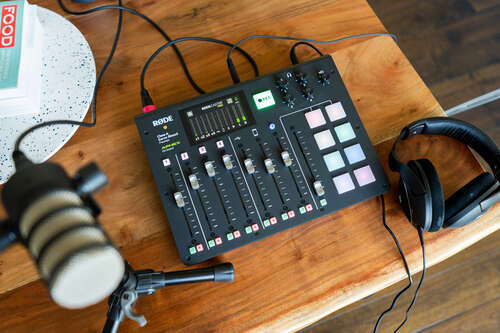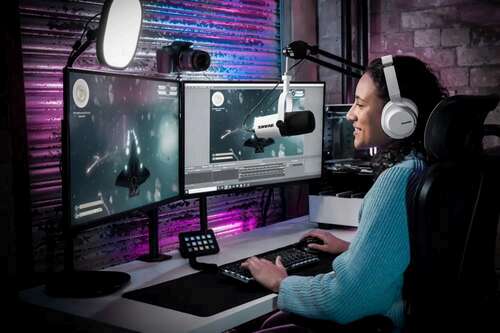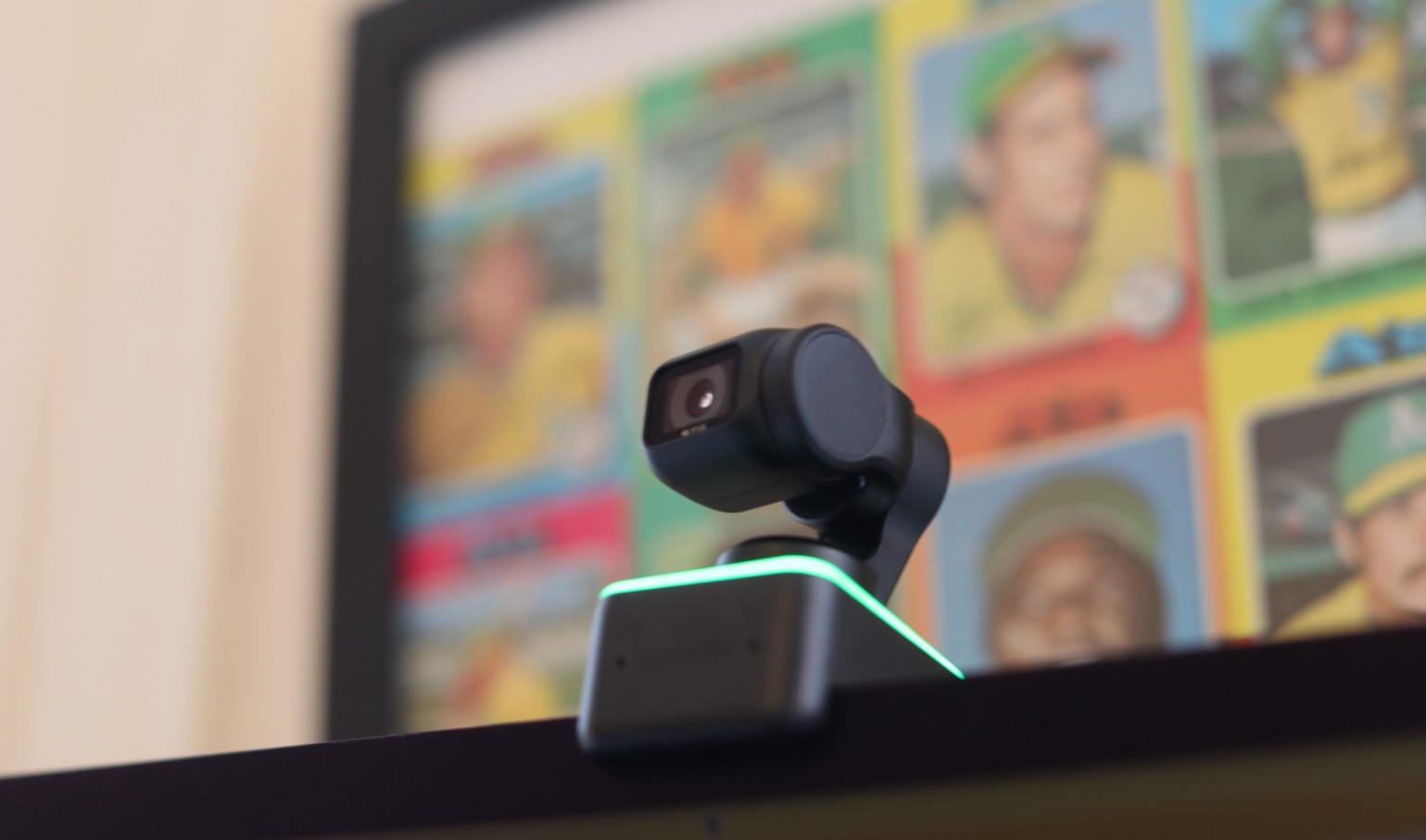If you’re among people as you read this, look to your left. Now look to your right. Statistically speaking, those on either side of you probably have their own podcasts. Odds are you have several people in your life that also fit the bill. The good news is that the prevalence of podcasts means better and better tools are being produced to help hosts up their games.
A couple of months back, I wrote a How I Podcast article showcasing some of the tips and tricks I’ve deployed for my own show, RiYL. It’s very much a one-man production at the moment, but I’ve been able to upgrade my game considerably, thanks to new tech.
You’ll find a lot of what I personally use on this list. Some items are pricier than others, but the good news is that in 2023, you don’t have to pay a ton to produce a great-sounding show. And if you’re looking for new great-sounding shows, check out our podcasts covering startups, founders and the crypto space: Equity, Found and Chain Reaction.
This article contains links to affiliate partners where available. When you buy through these links, TechCrunch may earn an affiliate commission.
RODECaster Pro II
Several years after its initial release, the RODECaster Pro remains the gold standard for building on-the-go studios. The system is great for in-person productions, particularly those without a fixed location. When I go ultra portable, nothing beats a Tascam and a couple of mics, but if you want to recreate the feeling of a four-mic studio, without the cost of a true pro soundboard, this is where you go.
It’s super easy to use out of the box, and offers a ton of controls and customization, along with features like music cue trigger pads to produce a podcast in real time. It’s a perfect gift for a seasoned hobbyist podcaster looking to take things to the next level.
Tula Mic
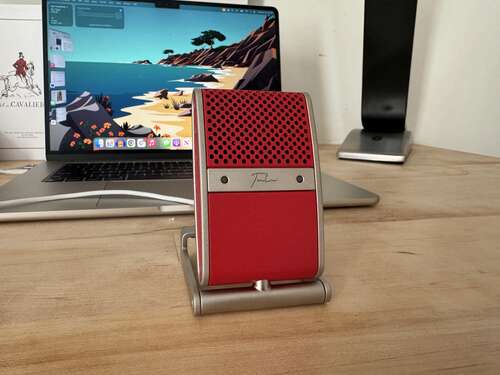
Image Credits: Brian Heater
I could have just as easily stuck this one in the travel gift guide. As someone whose work requires they hit the road once a month, I’ve been looking for way to up my hotel recording game. The Tula Mic has it all: good looks, great sound quality and a compact foldable design that can sit comfortably in your carry on.
The mic connects to your computer via a USB-C port and offers a range of different settings. You can also take it on the go for field recordings, courtesy of a 12-hour battery and 8GB of internal storage. It’s an extremely well thought out bit of hardware up and down the line.
Shure MV7
I’ve been through so many USB microphones — especially over the course of the pandemic. The Shure MV7 is the first one I’ve ever truly fallen in love with. Once I picked this up, I’ve recorded every episode of my podcast, moderated dozens of panels and conducted countless meetings with it. In fact, it stays permanently plugged into my desktop at all times.
Now it’s not quite the pro level of Shure’s SM7B — generally regarded as the gold standard of podcasting mics. But the MV7 is cheaper and, more importantly, features a USB input so you can get great sound without having to futz with separate audio interface hardware.
Insta360 Link
This webcam is another fixture for my home desktop. It’s a weird thing to say, but I get complemented for my video quality all the time during work meetings. The video goes up to 4K, but for most things, you’re more than fine relying on 1080p. The extra resolution really comes in handy, however, when utilizing the 5x digital zoom with minimal image degradation. If you tend to move around a lot, no worries, the built-in electronic gimbal has you covered.
Insta360’s desktop software is also foolproof, making sure things are correctly framed ahead of time, so you don’t look like an amateur, adjusting things after you’ve already logged in.
Razer Ring Light
Over the pandemic a lot of us were forced to confront just how bad our home lighting is. While a good webcam can go a long way toward improving your image, it’s nothing without a good light source. There are a ton of ring lights on the market, but ultimately I landed on this one from gaming giant Razer.
The price is certainly right, and the system can be mounted to a tripod or the back of a monitor. My advice, however, is that straight on isn’t always best — especially if you wear glasses. You’ll want to experiment with the set up a bit, but thankfully, the mounting system gives you all sorts of options here.
Bose QuietComfort Ultra
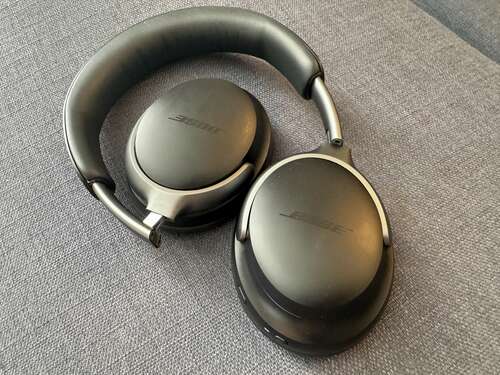
Image Credits: Brian Heater
My advice for all podcasters is: wear headphones. And try to make your guests where them, when possible. It will make your job as editor significantly easier. For most hobbyist podcasters, I generally encourage a pair of over-ear headphones that you also intend to use in your day-to-day life. If you’re recording remotely, you probably don’t need a pair of high-end monitors.
I’m going with the QuietComfort Ultra based on track record (they’re currently up for preorder). Bose makes great all-day wear headphones, so you can use them for podcasts, meetings and take them on long flights, thanks to their ultra-comfortable design.
I also highly recommend looking at a pair with auxiliary input. That’s a real helpful feature for editing, not to mention those fickle airplane seat-back video systems.
Subscriptions
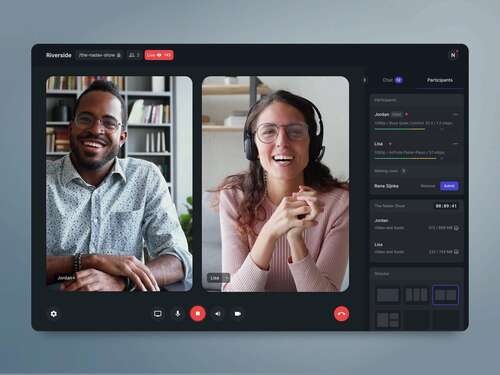
Image Credits: Riverside.fm
As a rule, subscriptions make great gifts. This certainly applies to podcasting. I feel like every month I hear about another service I want to subscribe to in order to take my show to the next level. Here are some of my current favorites:
Riverside.fm ($15/month): I’ve recommended Zencastr in previous years, but ultimately the platform gave me too much grief. For $15 a month Riverside gives you up to five hours of high-quality remote video and audio recording.
Auphonic ($10.50/month): The newest addition to my workflow saves me several hours per month. Upload a track and Auphonic will level it and remove background noise in a matter of minutes.
Otter ($10/month): Otter is a godsend for both transcription and editing. For the latter, the AI-based service can help you find keywords in no time.
Podcastpage ($12/month): A super easy to use service that generates a professional-looking site for your show. I was dealing with an injury this past weekend and spent a few hours customizing my show’s page. The flexibility is impressive for a visual editor.
